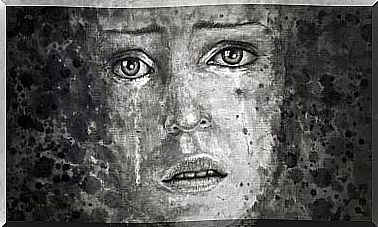The Tunnel, Portrait Of An Obsession
The tunnel is a novel by the Argentine writer Ernesto Sábato; author known for his complex personality. The great sensitivity that he captures in his novels is guessed as the product of a childhood and adolescence characterized by permanent anguish and painful loneliness. Ingredients all of them present in The Tunnel , a work that we can consider psychological and existentialist.
Although this text can be approached from different perspectives, in this case we have decided to do it from the way in which Sábato is creating and building links. Thus, we will discover not only an obsessive relationship, but we will also extract an Oedipus complex that we will develop throughout this article.
Summary of The Tunnel
As the article El continuum in El tunnel by Ernesto Sábato points out , this work is the first of a trilogy. In it a painter, Juan Pablo Castel, tells how he ends up killing a woman he is attracted to, María. What motivates the murder is the discovery that she is married and the suspicion that she has a relationship with Hunter, her cousin.
Their relationship is full of assumptions, doubts and mistrust. Juan Pablo Castel becomes obsessed with María, tries to clarify his suspicions and this causes María to move away from him progressively, something that drives him crazy.
The Oedipus complex in The Tunnel
The obsession that Juan Pablo Castel, the protagonist, feels for María may be the result of an unresolved conflict that began to develop in childhood. An Oedipus complex that he reproduces in adulthood and that in the work allows us to intuit when he says:
In addition, from the beginning, the protagonist speaks of Maria as a wise and experienced woman. Likewise, there are scenes in which she is shown as a protective figure, just as a mother would be.
However, the most interesting thing is that Maria adopts this figure of a mother who admits her “son’s” tantrums unconsciously. For example, when Juan Pablo Castel claims her or takes her tightly by the arm, she is unfazed. It is there, but at the same time it is not there; Well, Mary is passive (not submissive) and is distancing herself more and more from Juan Pablo.
The Ernesto Sábato tunnel
The fact that Ernesto Sábato titled this work The Tunnel is not the product of chance. The protagonist, Juan Pablo Castel, has been in a tunnel since his childhood. One that he cannot get out of, since he drags that Oedipus complex that makes him experience a stormy and unbalanced relationship.
This tunnel is full of loneliness and anguish. Emotions suffered by the protagonist and that Ernesto Sábato himself experienced in his childhood and adolescence. He believes that to get out of that tunnel the only possibility is love. That is why Juan Pablo Castel clings so much to Mary. It’s like your lifeline. However, he is wrong.
Psychosis, obsession and love
We are not going to affirm that Juan Pablo Castel is a psychopath ; however, he does display attitudes that point to a delusional disorder. For example, when you wait for Maria to get out of work, watching her from a nearby coffee shop for hours. Also, before talking to her about the different scenarios that she imagines obsessively, almost sickly, before taking the step of communicating.
Although María appears as a solution for his loneliness, in reality the love that Juan Pablo Castel feels is clouded by mistrust and fear that María will abandon him (emotional dependence) and the search for the veracity of his assumptions and suspicions (Pygmalion effect).
All this maelstrom of unfortunate feelings and actions that lead him to act violently on certain occasions and to instantly ask for forgiveness are the result of an obsession. A madness that results in a tragic ending, but that Juan Pablo Castel recounts as a rational and coherent ending: the murder of María.

A novel of hopelessness
The prologue of the book The Tunnel points out that “it is a novel of hopelessness. ” In it there are only demons, torments, circumstances from the past that are still present and that urge an impossible search. A saving love, a love that is really not possible.
The attitudes that the protagonist has only make him walk through that tunnel that torments him so much. The isolation is accentuated and, no matter how hard Juan Pablo Castel puts in with María, the result is the same, his death.
Although this is a novel of despair, the one that follows it On heroes and tombs was called by Sábato himself as “a metaphysics of hope.” The last of the works in this trilogy, Abbadón the exterminator , once again puts readers in the face of hope and defeat.
We conclude this article with one of the most memorable phrases of The Tunnel :









